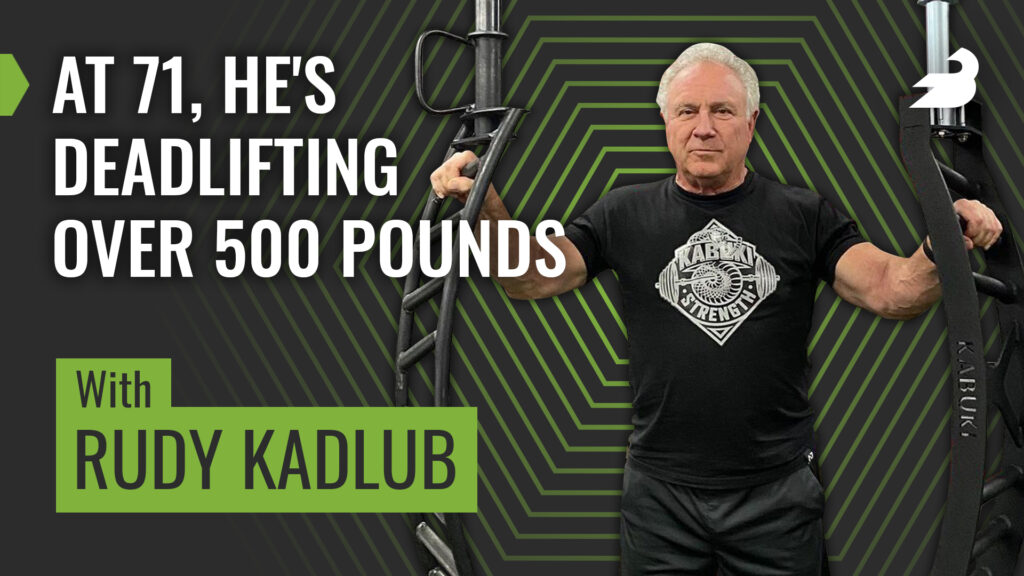Today I’m talking to powerlifter, record holder, and Kabuki Strength CEO Rudy Kadlub. Rudy has, admittedly, been stronger than average his whole life, but it wasn’t until his 50s that he really began training in strength sports. Now in his early 70s, Rudy is a massive figure in strength sports for his accomplishments both on and off the powerlifting platform. We discuss his background, strength training for more mature athletes, co-founding Kabuki Strength, and much, much more.

On this episode of The BarBend Podcast, host David Thomas Tao talks to Rudy Kadlub about:
- Rudy’s athletic background and “getting stronger than other people faster” (03:00)
- Discovering powerlifting in his mid-50s (07:00)
- Deciding to tae up competitive powerlifting and accidentally chasing big records (11:00)
- Meeting Chris Duffin, his eventual training and business partner (13:30)
- Co-founding Kabuki Strength Labs — from great equipment to hilarious t-shirts (18:00)
- “Whiskey & Deadlifts” (22:00)
- Why Rudy thinks strength training can change lives at all ages (26:00)
- Rudy’s next goals and encouraging mature athletes to take up strength training (30:50)
Relevant links and further reading: